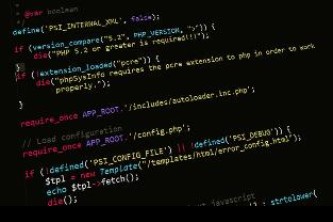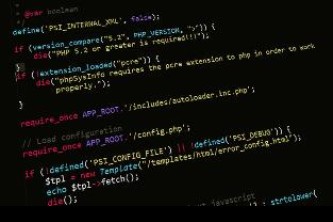CJSON 如何转换为对象:从 JSON 数据到结构化数据的完整指南
在当今的软件开发中,JSON(JavaScript Object Notation)已成为数据交换的主流格式之一,而 CJSON 是一个轻量级的 C 语言 JSON 解析器,它能够帮助开发者轻松地解析和生成 JSON 数据,本文将详细介绍如何使用 CJSON 将 JSON 数据转换为 C 语言中的对象(结构体),并提供完整的代码示例和最佳实践。
CJSON 简介
CJSON 是一个开源的 C 语言 JSON 解析器,具有以下特点:
- 轻量级:代码简洁,易于集成
- 高效:解析速度快,内存占用小
- 简单易用:API 设计直观,文档完善
- 跨平台:支持 Windows、Linux、Mac 等多种操作系统
准备工作
在开始之前,你需要完成以下准备工作:
-
下载 CJSON 库 从 GitHub 官方仓库(https://github.com/DaveGamble/cJSON)下载最新版本的 CJSON 库。
-
集成到项目中 将下载的 CJSON 源文件(cJSON.c 和 cJSON.h)添加到你的项目中。
-
包含头文件 在你的 C 代码中包含 CJSON 的头文件:
#include "cJSON.h"
CJSON 对象转换的基本步骤
将 JSON 数据转换为 C 对象通常遵循以下步骤:
- 解析 JSON 字符串:使用
cJSON_Parse()函数将 JSON 字符串解析为 cJSON 对象。 - 访问 JSON 数据:通过 CJSON 提供的 API 访问 JSON 对象中的各个元素。
- 转换为 C 结构体:将访问到的 JSON 数据填充到你定义的 C 结构体中。
- 释放内存:使用
cJSON_Delete()释放解析过程中分配的内存。
详细代码示例
下面我们通过一个具体的例子来演示如何将 JSON 数据转换为 C 对象。
示例 JSON 数据
假设我们有以下 JSON 数据:
{
"name": "张三",
"age": 30,
"isStudent": false,
"scores": [85, 90, 78],
"address": {
"city": "北京",
"district": "海淀区"
}
}
定义对应的 C 结构体
typedef struct {
char name[50];
int age;
bool isStudent;
int scores[3];
struct {
char city[20];
char district[20];
} address;
} Person;
完整转换代码
#include <stdio.h>
#include <string.h>
#include <stdbool.h>
#include "cJSON.h"
typedef struct {
char name[50];
int age;
bool isStudent;
int scores[3];
struct {
char city[20];
char district[20];
} address;
} Person;
void jsonToPerson(const char* jsonString, Person* person) {
// 1. 解析 JSON 字符串
cJSON* root = cJSON_Parse(jsonString);
if (root == NULL) {
printf("Error parsing JSON: %s\n", cJSON_GetErrorPtr());
return;
}
// 2. 获取各个字段的值
cJSON* name = cJSON_GetObjectItem(root, "name");
cJSON* age = cJSON_GetObjectItem(root, "age");
cJSON* isStudent = cJSON_GetObjectItem(root, "isStudent");
cJSON* scores = cJSON_GetObjectItem(root, "scores");
cJSON* address = cJSON_GetObjectItem(root, "address");
// 3. 填充 C 结构体
if (name && name->valuestring) {
strncpy(person->name, name->valuestring, sizeof(person->name) - 1);
person->name[sizeof(person->name) - 1] = '\0';
}
if (age && age->type == cJSON_Number) {
person->age = age->valueint;
}
if (isStudent && isStudent->type == cJSON_Bool) {
person->isStudent = isStudent->valueint;
}
if (scores && cJSON_IsArray(scores)) {
int count = cJSON_GetArraySize(scores);
for (int i = 0; i < count && i < 3; i++) {
cJSON* score = cJSON_GetArrayItem(scores, i);
if (score && score->type == cJSON_Number) {
person->scores[i] = score->valueint;
}
}
}
if (address && cJSON_IsObject(address)) {
cJSON* city = cJSON_GetObjectItem(address, "city");
cJSON* district = cJSON_GetObjectItem(address, "district");
if (city && city->valuestring) {
strncpy(person->address.city, city->valuestring, sizeof(person->address.city) - 1);
person->address.city[sizeof(person->address.city) - 1] = '\0';
}
if (district && district->valuestring) {
strncpy(person->address.district, district->valuestring, sizeof(person->address.district) - 1);
person->address.district[sizeof(person->address.district) - 1] = '\0';
}
}
// 4. 释放内存
cJSON_Delete(root);
}
int main() {
const char* jsonString = "{"
"\"name\": \"张三\","
"\"age\": 30,"
"\"isStudent\": false,"
"\"scores\": [85, 90, 78],"
"\"address\": {"
"\"city\": \"北京\","
"\"district\": \"海淀区\""
"}"
"}";
Person person;
memset(&person, 0, sizeof(person)); // 初始化结构体
jsonToPerson(jsonString, &person);
// 打印转换后的结果
printf("Name: %s\n", person.name);
printf("Age: %d\n", person.age);
printf("Is Student: %s\n", person.isStudent ? "true" : "false");
printf("Scores: %d, %d, %d\n", person.scores[0], person.scores[1], person.scores[2]);
printf("Address: %s, %s\n", person.address.city, person.address.district);
return 0;
}
关键 API 说明
在上述代码中,我们使用了以下 CJSON 关键 API:
-
*`cJSON_Parse(const char value)`**
- 功能:将 JSON 字符串解析为 cJSON 对象
- 参数:JSON 格式的字符串
- 返回:解析成功返回 cJSON 对象指针,失败返回 NULL
-
cJSON_GetObjectItem(cJSON* object, const char* string)- 功能:从 JSON 对象中获取指定名称的字段
- 参数:父 JSON 对象,字段名称
- 返回:找到的字段对应的 cJSON 对象,未找到返回 NULL
-
*`cJSON_IsArray(cJSON object)`**
- 功能:检查 cJSON 对象是否为数组
- 返回:是数组返回 true,否则返回 false
-
*`cJSON_GetArraySize(cJSON array)`**
- 功能:获取数组的长度
- 参数:数组类型的 cJSON 对象
- 返回:数组长度
-
*`cJSON_GetArrayItem(cJSON array, int index)`**
- 功能:获取数组中指定索引的元素
- 参数:数组类型的 cJSON 对象,索引
- 返回:数组元素对应的 cJSON 对象
-
*`cJSON_Delete(cJSON object)`**
- 功能:释放 cJSON 对象及其所有子对象占用的内存
- 参数:要释放的 cJSON 对象
错误处理与最佳实践
在使用 CJSON 进行转换时,需要注意以下几点:
-
检查返回值
- 始终检查
cJSON_Parse()的返回值,确保解析成功 - 检查
cJSON_GetObjectItem()的返回值,确保字段存在
- 始终检查
-
类型检查
- 在访问 JSON 字段的值之前,使用
cJSON_IsNumber()、cJSON_IsString()、cJSON_IsBool()等函数检查值的类型
- 在访问 JSON 字段的值之前,使用
-
内存管理
- 记得调用
cJSON_Delete()释放解析过程中分配的内存,避免内存泄漏
- 记得调用
-
缓冲区安全
- 使用
strncpy()而不是strcpy()来避免缓冲区溢出 - 确保字符串以 null 结尾
- 使用
-
处理可选字段
对于 JSON 中可能不存在的字段,添加 NULL 检查
高级用法
处理动态数组
JSON 数组的长度不确定,可以使用动态数组:
int* scores = NULL;
int scoreCount = 0;
if (scores && cJSON_IsArray(scores)) {
scoreCount = cJSON_GetArraySize(scores);
scores = (int*)malloc(scoreCount * sizeof(int));
for (int i = 0; i < scoreCount; i++)






还没有评论,来说两句吧...